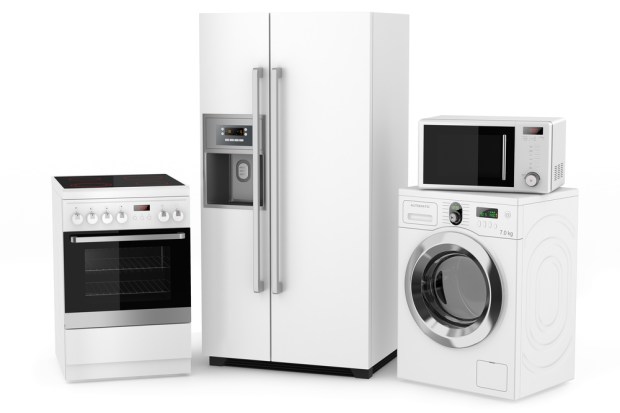How Appliances Helped Lowe’s Master Mobile Commerce

Once upon a time, brick-and-mortar retailers were talking about eCommerce like the End of Days, but it’s much clearer now that it’s no longer that at all. Customers have integrated mobile platforms into their traditional path-to-purchase activities and everything from initial brand research to a final check of product ratings while in the store happens on smartphones, making it an integral part of the physical store experience. Savvy retailers understand this and are working hard to make the phone not just a part of the in-store shopping process, but a seamless part of it.
Something that home improvement retailer Lowe’s seems to have mastered.
New research from J.D. Power and McGraw Hill Financial showed that the do-it-yourself emporium has created one of the smoothest customer experiences on its mobile platforms.
In particular, the J.D. Power/McGraw Hill study highlighted how researching home appliances through Lowe’s mobile sites drove considerable conversions through in-store sales. In total, 66 percent of customers who conducted mobile research through a site or app perceived to offer a streamlined and frictionless experience said they “definitely will” make a purchase at that store in the future, and Lowe’s was the top performer in this area.
“The ability to easily navigate through information on a website can motivate shoppers to view the appliance of interest in person,” Christina Cooley, director of home improvements industries with J.D. Power, said in a press release. “Also, by establishing a rapport with appliance shoppers through their website, brands and retailers can help drive consideration of additional purchases by those customers.”
So what makes a mobile research experience enjoyable for consumers, and how can retailers and brands tailor their online presences for conversions ahead of the holiday season?
Survey respondents pointed to products reviews (69 percent) and pricing information (64 percent) as the two most important details to emphasize on mobile platforms.
While a frictionless mobile research process across the board should be the ultimate goal for every retailer, Lowe’s marked success with appliances in particular should be turning heads in the retail world.
As Tim Ash, CEO of SiteTuners, wrote in a column for Marketing Land, big-ticket items like washers, dryers and refrigerators – and the high average prices attached to them – create psychological barriers in the path to purchase. If retailers don’t make sure that product features or specifications aren’t readily visible through mobile interfaces, consumers may suspend their research at the drop of a hat and abandon what could have otherwise been sure-fire conversions.
Appliances are far from the only big-ticket items that the average customer puts a good deal of forethought and preparation into before pulling the trigger. Everything from automobiles to cosmetics can be the targets of intense customer research, and if retailers and brands can find ways to hammer out the kinks in the consumer research process on mobile and beyond, they may end up tapping into a path-to-purchase goldmine. Especially due to the fact that very few consumers are purchasing big-ticket items through mobile and instead using retailers’ apps to supplement their research, it’s crucial that merchants don’t lose potential sales even before customers get to the physical storefront.
Very few Luddites survive in this increasingly data-driven retail ecosystem, and companies that fail to keep pace with the consumer appetite for mobile risk falling behind. The J.D. Power study noted the overall share of customers who used a mobile device to research an eventual appliance purchase climbed from 20 percent in 2013 to 26 percent in 2015.
“The rising use of mobile is changing the appliance shopping experience,” Cooley said. “With a smartphone or tablet, shoppers can access and compare pricing while at a store and even locate another store.”
Therein lies the rub: Retailers with excellent mobile experiences for expensive products that require heavy research stand to pull ahead of the pack. Sooner rather than later, though, retailers with subpar mobile apps that don’t meet customer expectations might start bleeding high-volume traffic to their more tech-savvy competitors.
